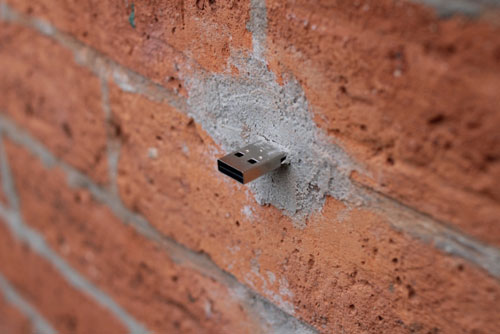The digital file based artworks in the Street Show, which were perversely kept offline and made available only on a USB stick stuck in some bricks on 21st Street in NY*, were quickly downloaded by a group of old school code phreaks calling themselves 0-Day Art. That organization is making the files available as a Torrent.
Their revolutionary rhetoric, minus the mid '90s-style green ASCII letters on black screen:
| 0-DAY (pronounced as zero day) - refers to any |
| copy of work that has been released the same day |
| as the original, or sometimes even before. It is |
| considered a mark of skill among warez distro |
| groups to crack and distribute a program on the |
| same day of its commercial release. |
|____________________________________________________|
"We're going to take it offline for the collector,
so they can just have it locally."
- Lauren Cornell, Executive Director Rhizome.org
. . : WE WILL GET THAT ART BACK ONLINE BY ANY MEANS NECESSARY : . .
*but not too inconveniently located near an art & technology not-for-profit.
More on the Street Show.


